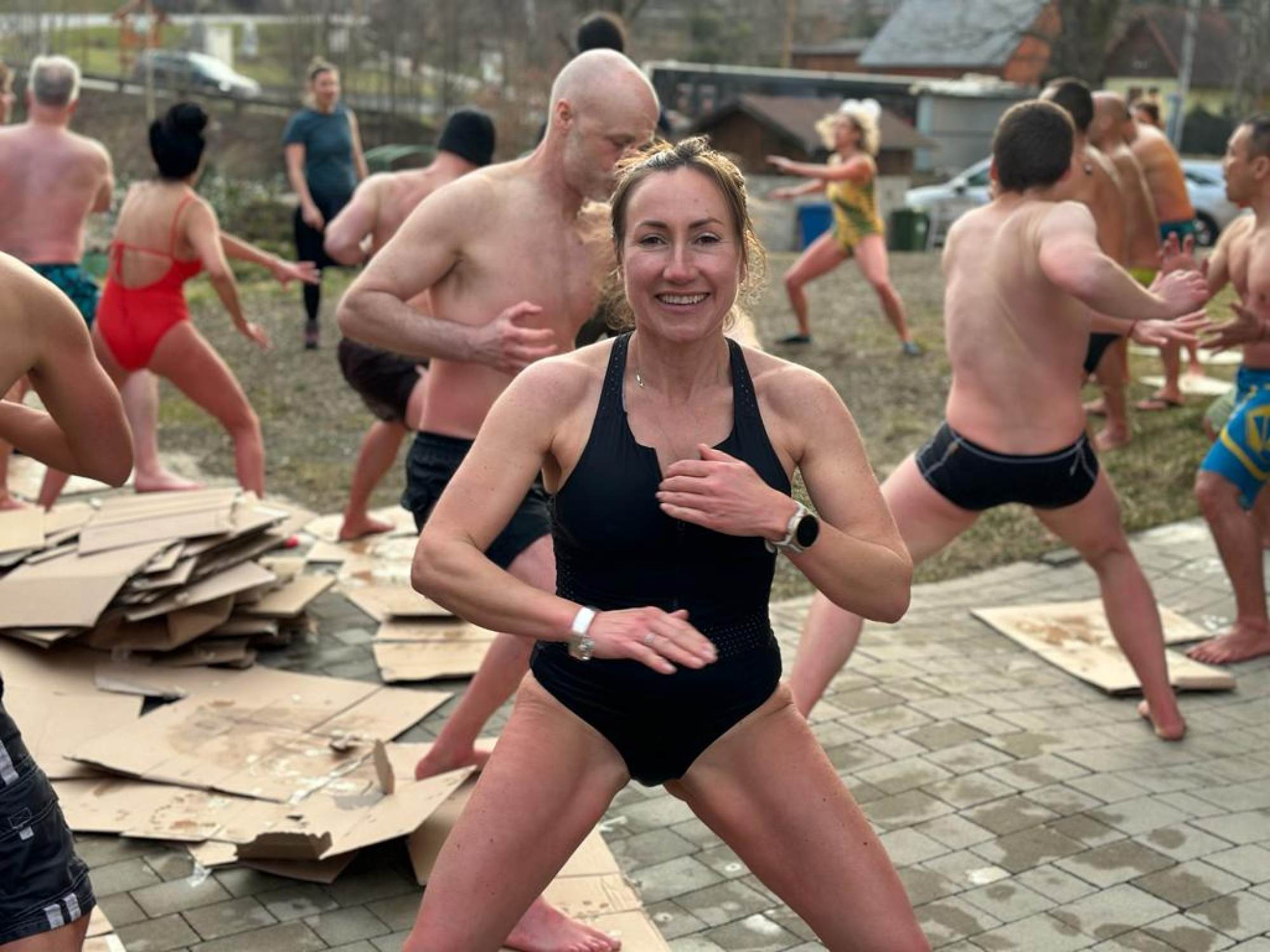
Wim Hof Method: how cold water therapy and breathing exercises help a widow control her grief, build resilience and give her ‘a massive high’
- After the sudden death of her husband, Heather Ashley found healing through immersion in ice-cold seas, and breathwork, as advocated by the Wim Hof Method
- Cold water therapy is proven to lower cortisol, which causes inflammation, one of the Western world’s biggest killers, while also triggering feel-good chemicals
Heather and David Ashley moved to a seaside town in Dorset, southwest England, from Doha, Qatar, in 2019. It was a new start, as David, a fighter pilot, had hurt his back and needed time to recover. At the time, Heather was splitting her time between working as a health coach and looking after her two teenage sons.
The British couple could not have foreseen the tragedy that would take David’s life three years later, nor the healing method that would carry Heather through her journey of grief.
That method was discovered by David while he was out walking on the beach one day, when he met someone who extolled the benefits of cold water for healing. So he began dipping in the sea regularly to help speed his recovery from his back injury. He was amazed at the benefits, and suggested Heather try it.
“I always said, you’re not going to get me in the sea in the summer so there is no chance I’m going in in winter!” Heather recalls.

She came to eat her words. During a lockdown in March 2020 because of the pandemic, she was persuaded by a friend to start sea dipping.
“It was wet, wild and windy, it was 8 degrees Celsius [46 degrees Fahrenheit], everything in me was screaming out ‘Don’t do it!’ And it was painful at first, let’s face it. But after I got through the first 30 seconds, the adrenaline kicked in and it gave me a massive high.”
Heather quickly became hooked on the dopamine rush from sea-dipping.
Take ice baths to have better sex, an expert says – yes, really
“I couldn’t believe how amazing I felt in the sea. Even when I came out, I felt a natural high for the rest of the day. Plus I had conquered a fear. I thought, if I could do that, what else am I capable of?”
Heather, who at the time was running a property business with David, decided to retrain as a Wim Hof coach, to spread the word of the benefits of cold-water immersion and breathwork.
“I thought, I’m not someone who was born to love the cold, so if I can do it, anyone can.”

Wim Hof, a Dutch extreme athlete and multiple Guinness World Record holder also known as “The Iceman”, extols three core components of his method: breathwork (a form of hyperventilation), cold therapy and commitment.
The Wim Hof Method improves your cardiovascular system through vasoconstriction in the cold, then vasodilation once you come out and adjust. Crucially, cold water therapy is proven to lower cortisol, which causes inflammation, one of the biggest killers in the Western world, while also triggering feel-good chemicals.
Heather qualified as a Wim Hof coach and amassed a loyal following of clients.
When husband David’s back had healed, he lined up his first test flight in Italy in March 2022. But disaster struck and he was forced to eject – and suffered fatal head injuries.
A year on, the pain of losing her husband is still sharp, and Heather’s emotions are raw. But with remarkable inner strength, it is clear she has already come far on her journey through grief.
“The cold water has massively helped me,” she says. “Not long after the accident, one of my friends said to me, ‘Heather, thank god for the Wim Hof Method.’ It hadn’t really struck me until then, but I can say without a doubt that I would not be, mentally and physically, in the place I am now if it wasn’t for the Wim Hof Method.”

“I always say, you’re never going to know what you will have to face in life. But anything you can do that builds your inner resilience will help hold your hand when life has thrown you a massive curve ball.”
5 ways an expat became fitter, healthier and happier than ever in Malaysia
Wim Hof himself first started using cold immersion therapy to cope with the grief of losing his first wife through suicide at a young age, leaving him to raise their four children. It helped him conquer the depression that ensued in the aftermath.
“The cold makes you stop thinking, it breaks the loop of emotional agony and it directly gave me relief,” he said in an interview with a UK newspaper. “Just a little time without being in that loop was able to bring about this healing from the inside.
“I did it consciously because I had to bring up four kids alone with little money. The cold and the breathing techniques gave me all the b****y energy to make a warm nest for my children and made me able to process all the emotional agony.”
The tragic event led him to develop the method that is now famous the world over, having helped so many with their own struggles.
Heather believes that for those starting out with the method, the changes will be apparent after the first few sessions.
“When I first practised the Wim Hof Method back in 2020, even before I started training to become an instructor, I realised I was acting differently in stressful situations. I was calmer, more in control, it was doing something to me. It was almost immediate.
“Anything you can do to take time out for you has got to be made part of your routine, because if you don’t, no one else will.”


